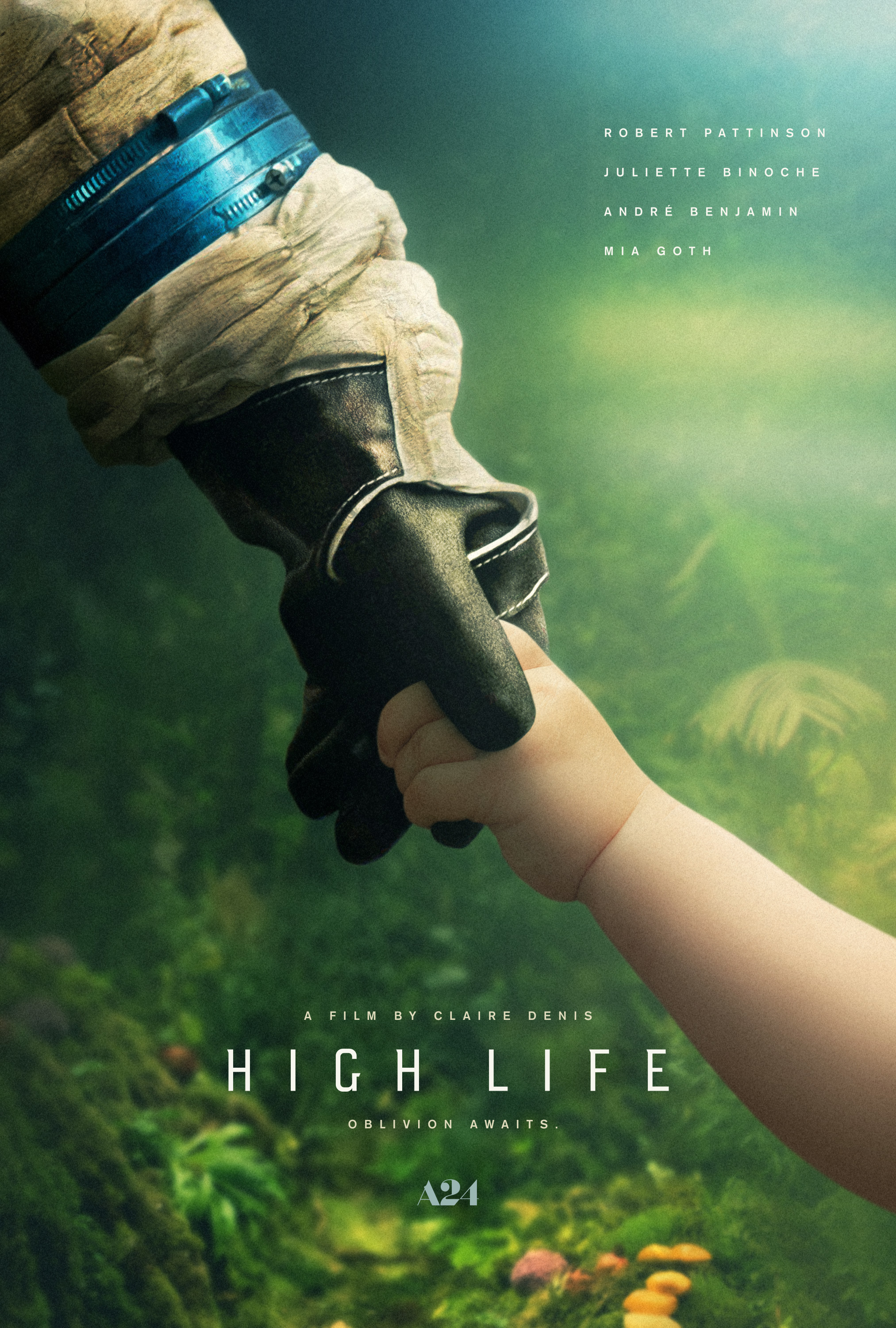
Content warning: This review describes onscreen depictions of sexual assault.
Two Wednesdays ago, primed by an intriguing trailer and glowing critical reviews, my friends and I walked to the Goldsmith Family Cinema to see Claire Denis’ accoladed film, “High Life.” The film, about a group of criminals who participate in an energy-seeking space mission, started out beautifully disorienting; the plot, initially engaging, was buttressed by absorbing, artistic shots: a floating glove, a rotating woman, dead bodies falling through space.
Then, the story began to take shape. A group of death-row inmates—including protagonist Monte (Robert Pattinson)—is sent into space to collect black hole energy, ostensibly in exchange for their freedom. On the spaceship, a scientist named Dr. Dibs (Juliette Binoche) performs sexual and procreative experiments on the prisoners in an attempt to produce a child through artificial insemination.
“High Life” left me feeling like the filmmakers feared the plot’s complexity. The screenwriting, cinematography, and acting felt disconnected, and the film seemed to gear up toward a conclusion that it never reached. Some reviewers have, fairly, characterized the film as intentionally challenging. While it is important to recognize the intentionally disorienting quality of experimental films, “High Life’s” attempt to create a bleak world instead creates a flat one. Its veil of artistic nuance, once ruptured, exposes no substance at all.
And poor filmmaking does rupture that veil. The characters are static and unsympathetic despite the script’s fervent efforts to place emotional, provocative words into their mouths. The actors have no chemistry. In fact, some performances are truly awful. The script is, ultimately, predictable, resembling an automatically generated amalgamation of other science fiction scripts.
Sometimes, the script works against the dramatic goals of the plot. I can’t forget the moment that Monte’s narration kicks in. He narrates a sequence which is explicitly spelled out for us onscreen: people aboard the ship exchanging semen for pills. There’s no guise of inmates being exploited, no narrative of addiction. Instead, we get a ham-fisted effort to combine explicit narration with explicit depiction. We are left with a scene, apparently filmed in a school nurse’s office somewhere in California, that should have lasted two minutes but instead takes up five. If reviewers believe that the lack of a meaningful conclusion or purpose to Denis’ film signified her filmmaking nuance, this sequence alone proves otherwise. How, when viewers are spoon-fed easily digestible plot points, can we allege artistry or nuance?
When the film doesn’t demonstrate a grasp on either its plot or its own art form, we’ve got to ask how intentional the lack of a conclusion can be. That question matters because this film deals with serious issues. Through minor asides alone, it addresses issues from race and the prison industrial complex to human psychology and sexual assault, and then tosses them aside.
One issue which plagued this film is the confusing, yet intriguing, form of parenthood it tries to acknowledge. When Dr. Dibs does ultimately successfully produce a child (Willow, played by Scarlett Lindsey as a baby and Jessie Ross as a teenager), it is by taking Monte’s sperm without his awareness while he is under sedation and then inseminating another prisoner onboard. Due in part to the issue of unwilling parenthood, Willow’s mother is more like a procreator, not warm or motherly in the stereotypical sense. This is one point well made, in the sense that “High Life” is not judgmental of this lack of maternal feelings, despite the fact that such judgment has become typical in media representations of the family. Left alone with the child, Monte becomes a loving father figure. This representation, which some might argue represents a shift for gender roles in the family, is left unfinished. Monte’s character, despite appealing to fatherhood, is, by fault of the script or the acting, static, so the film cannot support claims about shifting gender roles or shifting obligations. From someone who grew up confused about the father’s role in the family, I personally looked forward to seeing a father-daughter relationship depicted onscreen. Yet this message remains as distant as the film’s setting and as illusory as its grasp on social issues. That images of fatherhood follow horrifically erotic scenes is another issue entirely.
“High Life” is also loaded with sexual assault. These sequences are troubling for myriad reasons, not the least of which is their frequency, but I found myself struck by the gender dynamics “High Life” ascribes to assault. When a male character assaults a woman, it’s depicted as brutal, violent, and terrorizing. But when, immediately afterwards, Binoche’s character assaults Pattinson’s, it’s depicted sensually, intimately, both despite and because of the fact that he is asleep. The female victim is passive and fragile. The male victim is peaceful. The female assailant is innocuous and desperate. The male assailant is killed. But the film doesn’t extend or comment on these characterizations. Instead, the scenes are left unexplained.
The sensationalized acts of assault end up coming off as gratuitous. Because they are never linked to a deeper meaning, these scenes are not integral to the plot (aside from prompting the ability to artificially inseminate at Monte’s on-screen degradation). I found myself hoping that, after “High Life’s” wide-scale release in the United States, critics would pan it for its insensitivity to assault, a problem that I’d hope we could tackle without simply exploiting it for its drama, especially given current events in the United States.
Ultimately, I found myself wondering, what do our filmmakers owe us? Theirs is an art form that defines our culture and which is linked to commercial consumerism. And people consume mindlessly; we all do. Mindlessly consuming a film ripe with sexual violence but devoid of any extenuating significance is dangerous. The guise of artistry is not an excuse for irresponsible filmmaking.
Virginia Sciolino can be reached at vsciolino@wesleyan.edu.


Leave a Reply